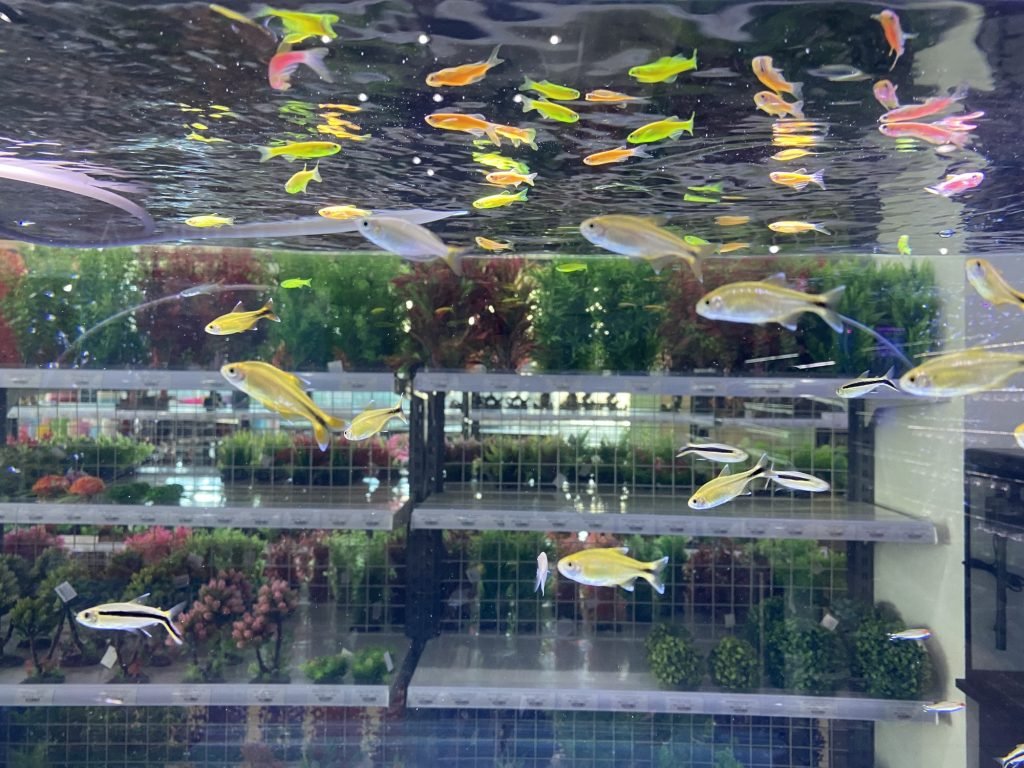Aquaponics is a great way to produce your own food, and it can be done on a budget. In this blog post, we will discuss some tips and tricks for building a cheap aquaponics system.
The Component Parts
The main parts of an aquaponics system are the fish tank, the grow bed, and the pump. While many people buy these new, you can actually save money by using recycled materials when sourcing these components. Of course, not only does this save you money but it’s also better for the environment which is part of what running an aquaponics system is all about. You can also save money running your aquaponics system with ways to reduce the energy costs and optimize plant growth but we’ll get to that later.
If you are interested in building an aquaponics system, the first step is to research the main components. As previously mentioned, the fish tank, grow bed, and pump are the essential parts of any aquaponics system and make up most of the cost.
The Tank

Depending on the size of your aquaponics system, there are a number of different options when it comes to the tank. The most common type of fish tank is the plastic storage container. These can be found at most home improvement stores and are often very inexpensive. Another option is to use a metal barrel or an IBC (intermediate bulk container). While these tanks are more expensive, they will last longer and provide better insulation, so they can actually end up saving you money over the long run.
Grow Bed

The grow bed is where the plants will be growing and can be made out of a variety of different materials. A common option is to use a plastic storage container or grow bag, which are often very inexpensive and easy to find. Another, better option is to use a wooden bed or a PVC pipe frame. These options are more expensive but will last longer and provide better drainage.
The Pump
The pump is responsible for circulating the water and can be either an air pump or a water pump. Air pumps are less expensive but require more maintenance. Water pumps are more expensive but more energy-efficient.
Location, Location, Location
Now that you know the main components of an aquaponics system, the next step is to choose a suitable location. The ideal location for an aquaponics system is one that receives plenty of sunlight and has easy access to water. Once you have chosen a location, the next step is to set up your system.
Setting It Up
There are a number of different ways to set up an aquaponics system. The most common method is to use a grow bed with a false bottom. This type of system is easy to set up and doesn’t require much maintenance. Another option is to use a deep water culture system. This type of system is more difficult to set up but can be more productive.
The first thing you will need to do is drill holes in the bottom of the grow bed for drainage. Next, you will need to connect the grow bed to the fish tank with a PVC pipe. Make sure that the pipe is secure and there are no leaks. Finally, you will need to install the pump and timer. These are normally readily available on auction sites such as eBay and by buying them second-hand, you can save a significant amount of money.
If you are looking to save money, one option is to use recycled materials. For example, you can use an old fish tank or grow bed. You can also find pumps at a discount if you shop around. Another way to reduce costs is by using energy-efficient components. LED lights are a great option for aquaponics systems, as they use less energy than traditional grow lights.
Add Fish & Plants

Once you have assembled your system, the next step is to add plants and fish. The type of fish you choose will depend on the climate in which you live. In general, tropical fish are best suited for aquaponics systems. However, there are much cold-water fish that can also be used. One of the most popular species is Tilapia because they are easy to care for and have a high yield.
Plants can be added to the system as soon as the fish have been introduced. The most common types of plants used in aquaponics systems are leafy greens, such as lettuce and spinach. These plants grow quickly and do not require much maintenance. You can also grow some great soft fruits such as tomatoes, strawberries, and cucumbers.
Aquaponics is a great way to grow fresh produce all year round. With a little bit of planning and some elbow grease, you can build a cheap aquaponics system that will provide you with fresh fruits and vegetables for years to come.
Do you have any tips or tricks for building a cheap aquaponics system? Let us know in the comments below!